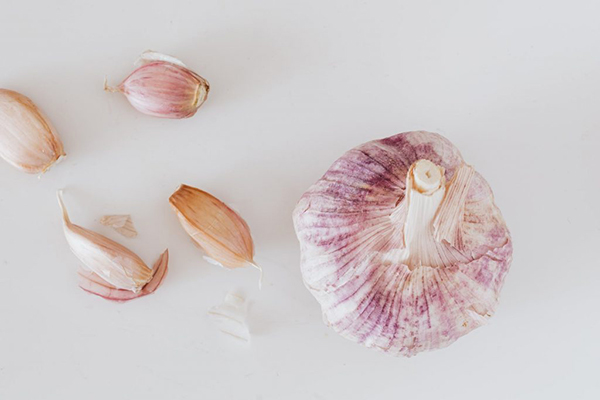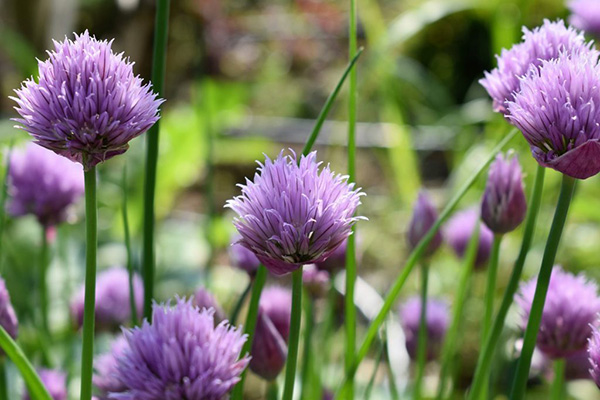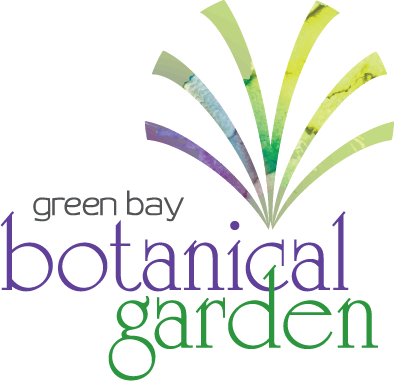When taking vitamins or supplements, we want to be sure of what’s in the bottle. But how do herbal supplement companies know?
To verify the authenticity of raw materials, companies examine them on both a macroscopic (seen with the naked eye) and microscopic (seen through a microscope) level. For example, two plants may look similar but have very different chemical profiles. Conversely, two plants may look different but have very similar chemical profiles.
Testing within the herbal supplement industry is important to determine identity and purity. Herbal supplement companies want to make sure their raw materials have not been mixed with filler materials to bulk up the product and cut costs. Using the wrong plant in an herbal supplement may have detrimental effects.
To assist with quality control, Green Bay Botanical Garden provides samples of raw plant material to Nature’s Way® to help them build their Botanical Reference Material Library. The Herbal Supplement Garden, which is located between the Larsen Orchard Remnant and the Van Den Wymelenberg Color & Foliage Garden, displays some of the medicinal herbs, as well as some of the look-a-likes used in their supplements.
Let’s talk about a few of the plants and their look-a-likes!
Allium


Garlic
The bulbs of garlic, Allium sativum, are medicinally used to fight off infections, especially in the gut and lungs. Modern research has confirmed that garlic can kill a number of diarrhea-causing organisms. It also protects the gastrointestinal tract and helps lower cholesterol and blood pressure.


Look-a-Like: Chives
Its look-a-like is chives, Allium schoenoprasum. The leaves are used medicinally for its beneficial effect on the digestive system and blood circulation. Chives contain both choline (nutrient similar to B vitamins) and folate (natural form of vitamin B9), each of which are linked to improving memory functions. Studies suggest that alliums, including chives, could help prevent cancer.
Basil


Holy Basil
The flowers, leaves, and stems of holy basil, Ocimum tenuiflorum, are medicinally used to treat many conditions, including H1N1 flu, diabetes, the common cold, headache, fever, stress, upset stomach, earaches, and more. It can even be used as a mosquito repellant and topically to treat ringworm. Holy basil is an adaptogenic herb, meaning the plant contains substances that help boost the body’s resilience in dealing with stressors.


Look-a-Like: Clove Basil
One of the look-a-likes is clove basil, Ocimum gratissimum. The flowers, leaves, and stems are medicinally used in treatments for digestive issues, headache, and the flu. The essential oils in clove basil, eugenol and thymol, are used internally and externally. The oil is used externally for skin infections.


Look-a-Like: African Basil
The other look-a-like is African basil, Ocimum × africanum. The leaves and seeds are medicinally used to treat stress, anxiety, heart disease, arthritis, diabetes, and dementia. The leaves are made into a paste that is applied topically to treat skin diseases. It’s also applied to wounds and burns that are not healing properly.
Passion Plants


Passion Flower
The flowers, leaves, and stems of passion flower, Passiflora incarnata, are medicinally used for treating anxiety, insomnia, and nervous disorders. It’s also used for pain, heart rhythm problems, menopausal symptoms, and attention-deficit hyperactivity disorder.


Look-a-Like: Passion Fruit
Its look-a-like is passion fruit, Passiflora edulis. The flowers, fruit, and leaves are medicinally used to lower blood pressure and to treat nervous disorders, bronchial conditions, arthritis, asthma, insomnia, gastrointestinal disorders, and menopausal symptoms. Carotenoids (naturally occurring pigments) and polyphenols (micronutrients that naturally occur in plants) in the extract of the yellow fruit can also kill cancer cells in vitro.
Clover


Red Clover
The flowers from red clover, Trifolium pretense, are medicinally used to relieve involuntary muscle spasms, promote the discharge or expulsion of mucus from the respiratory tract, and are used as treatment of coughs and bronchitis, especially whooping cough. Red clover is also used safely in adults and children to treat skin disorders such as eczema and psoriasis. It’s even used to treat women’s health problems such as menopausal and menstrual symptoms. It also has blood-purifying properties and assists body in removing metabolic waste products.


Look-a-Like: White Clover
Its look-a-like is white clover, Trifolium repens. The flowers are medicinally used to purify and cleanse the blood, and it’s also used to fight fevers, coughs, and colds. It’s beneficial in the treatment of gout and rheumatism pain.
Saffron Plants


Saffron Crocus
The flowers from saffron crocus, Crocus sativus, are medicinally used for asthma, cough, whooping cough, and to loosen phlegm. It’s also used for sleep problems, cancer, “hardening of the arteries,” intestinal gas, depression, Alzheimer’s disease, fright, shock, spitting up blood, pain, heartburn, and dry skin.


Look-a-Like: Safflower
Its look-a-like is safflower, Carthamus tinctorius. The flowers and seeds are medicinally used for preventing heart disease, including “hardening of the arteries” and stroke. It’s also used to treat fever, tumors, coughs, breathing problems, clotting conditions, pain, heart disease, chest pain, and traumatic injuries. Some people use it to induce sweating; and as a laxative, stimulant, antiperspirant, and expectorant to help loosen phlegm. It’s sometimes used by women for absent or painful menstrual periods as well.
Many of these medicinal herbs and their look-a-likes have medicinal properties, but when using any of these plants to treat conditions, it’s important that you know the supplement is made up of the right medicinal herb and not any fillers that may not have the right properties.
The next time you’re at the Garden, make sure you stop by our Herbal Supplement Garden to take a look at some of these plants and flowers up close. I’m also regularly tending to this area so if you have a question, don’t hesitate to ask!
Green Bay Botanical Garden does not endorse the use of these herbs to treat any illness or disease. Use with caution and consult with a physician before beginning any herbal treatments.







